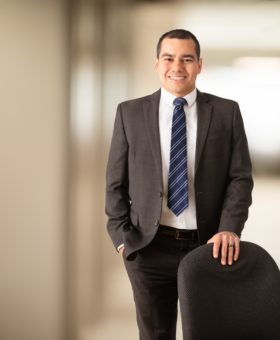 Matthew Healey
Matthew Healey See Bio
The 2019 Patent Eligibility Guidance (PEG) provided by the United States Patent Office (USPTO) has helped, to some degree, calm the § 101 storm as between patent examiners and stakeholders. The Federal Circuit, however, is not bound by this guidance and continues to make precedential decisions that muddy the waters, making it difficult for patent stakeholders to know with confidence what the judiciary will regard as patent eligible subject matter.
The Federal Circuit has extended the § 101 confusion to the mechanical arts. In Travel Sentry, Inc. v. David A. Tropp (Fed. Cir. 2022), the Federal Circuit made it clear that reciting mechanical features does not absolve patent claims from scrutiny under § 101. The claims in Travel Sentry recited a special lock with combination lock and master key functionality. Notwithstanding these mechanical features, the Federal Circuit held the claims were directed to an abstract idea (fundamental economic practices, organizing human activity) and that the claims’ recitation of a “special lock” failed to amount to an inventive concept.
In American Axle & Manufacturing, Inc. v. Neapco Holdings LLC (Fed. Cir. 2019), the Federal Circuit held that the claims were directed to a natural law (Hooke’s Law, and/or others) and that the claims “amount[] to no more than a directive to use one’s knowledge of Hooke’s law, and possibly other natural laws, to engage in an ad hoc trial-and-error process of changing the characteristics of a liner until a desired result is achieved” (emphasis added). The latter part of the reasoning related to an ad hoc trial and error process seems to convey concerns of § 112 enablement (e.g., implementation of the claims requiring undue experimentation) rather than subject matter eligibility under § 101. Notwithstanding, the Majority maintains that § 101 is the basis for the invalidity of the claims.
In Yu v. Apple Inc. (Fed. Cir. 2021), the Federal Circuit held that the claims were directed to “the abstract idea of taking two pictures (which may be at different exposures) and using one picture to enhance the other in some way.” It is notable that this characterization of the abstract idea would not be allowed according to the 2019 PEG as set forth by the USPTO. The Federal Circuit then stated that “the idea and practice of using multiple pictures to enhance each other has been known by photographers for over a century,” “the claimed hardware configuration itself is not an advance…” and that “claim 1 is recited at a high level of generality and merely invokes well-understood, routine, conventional components to apply the abstract idea identified above” (emphasis added). Such reasoning seems to convey concerns of § 102 novelty rather than subject matter eligibility under § 101. Notwithstanding, the Majority maintains that § 101 is the basis for the invalidity of the claims.
In view of such decisions, it is worrisome that the Federal Circuit is converting “§ 101 into a panacea for every concern [they] have over an invention’s patentability,” even for mechanical inventions. American Axle & Manufacturing, Inc. v. Neapco Holdings LLC (Fed. Cir. 2019) (Moore, dissenting).